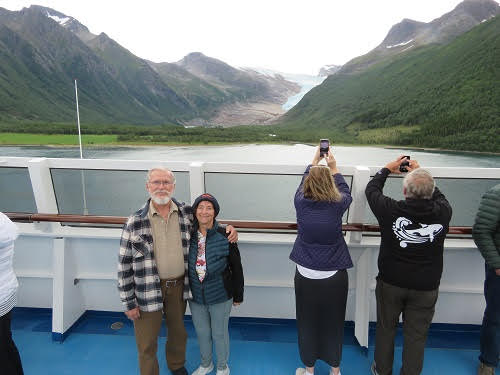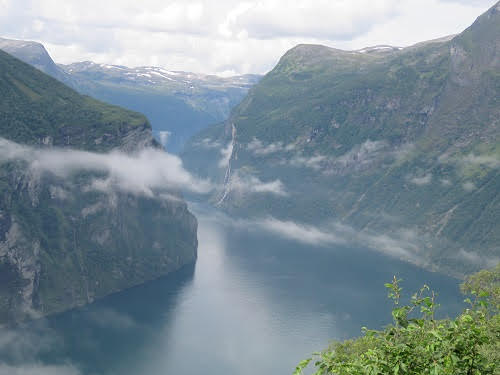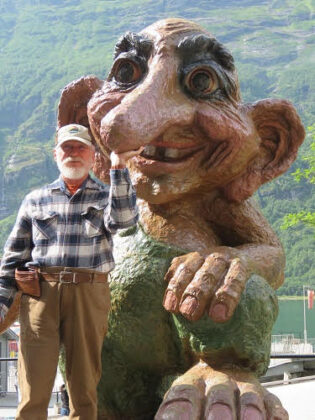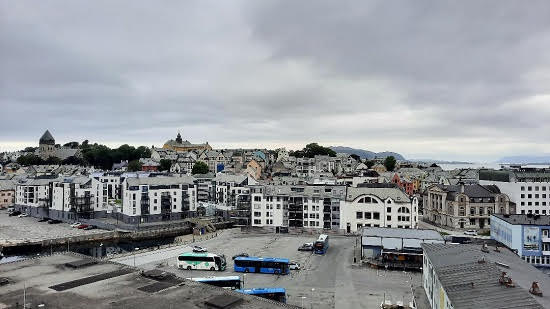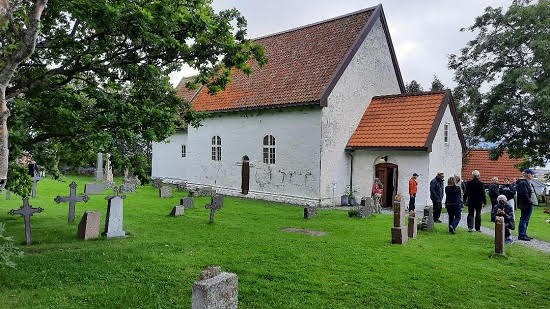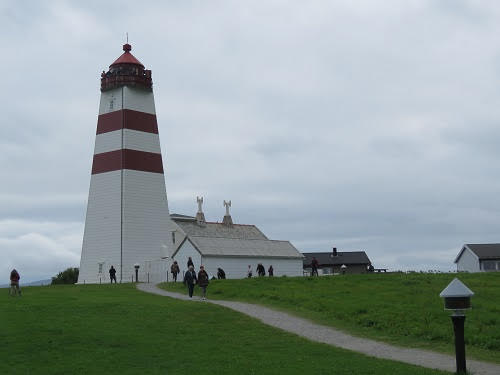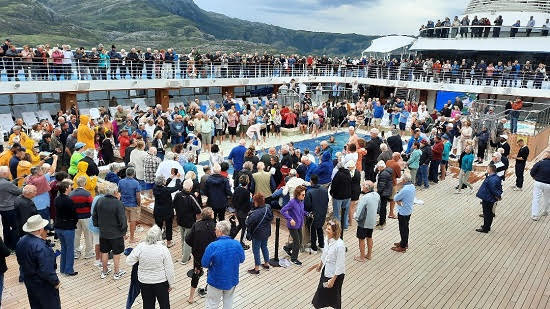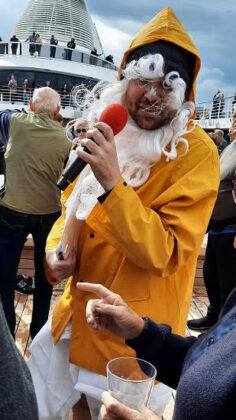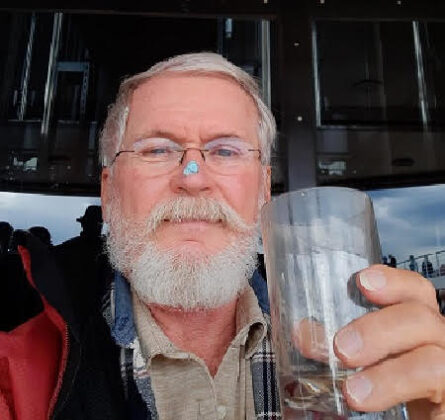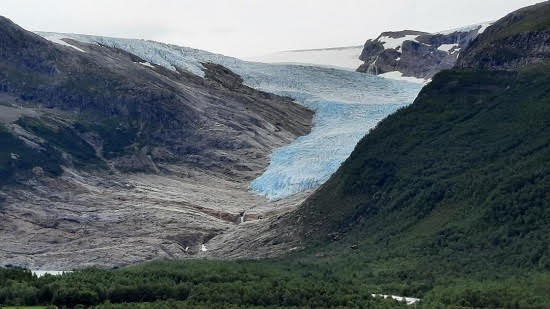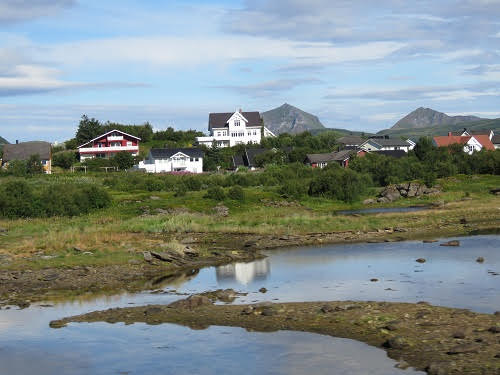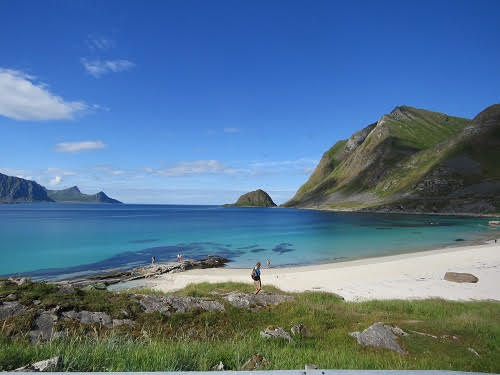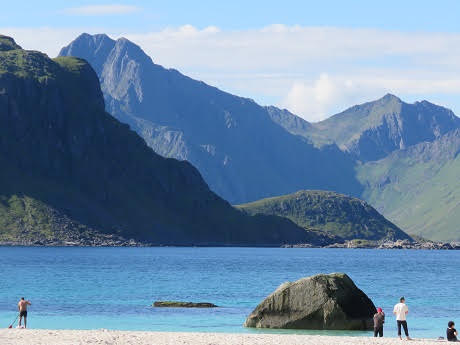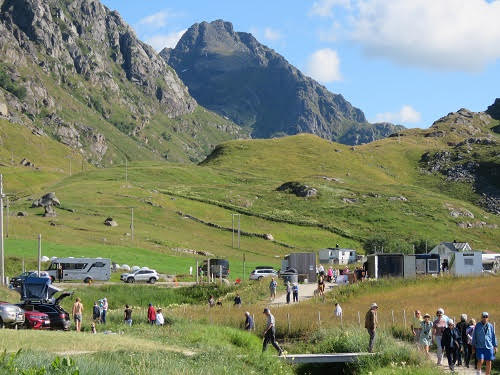By TR Robertson
Day 8 of our cruise to the Fjords and Cities of Norway found us docked in Geiranger, Norway, home of one of the most beautiful fjords in the world and one of Norway’s most popular tourist attractions. This is also on the UNESCO World Heritage list. The fjord is over 850 feet deep with the surrounding mountains rising to over 5,500 feet. The fjord is also known for spectacular waterfalls and deserted fjord farms that can be found high on the steep cliffsides. Several of the deserted farms are available for overnight stays. There are also several outdoor restaurants with beautiful views that can be found along the way as you drive along the twisting roadways to the top of the mountain. Studies have found that people have lived in this beautiful area of Norway since the Stone Age.
Our tour for this stop in Norway was a three-hour bus ride to the top of Mount Dalsnibba for an incredible viewpoint looking down into the Geirangerfjord and then a stop at another viewpoint at Eagle’s Bend for a different look into the waterways of Geiranger fjord. As we drove up the winding roads leading to the top of the mountain, we passed five hotels built along the cliffsides and eleven campgrounds located at various heights leading up the mountain. The road we were driving on was first built in the 1880’s, going through multiple revisions over the years. Portions of the old roadway were occasionally visible. The town along the coast was first settled in 1869 when British noblemen came into the area to take advantage of the salmon fishing opportunities. We also passed a number of goat farms, many with white rolled piles of sileage (hay) called Troll’s toilet paper by the locals. Arriving at the top of Mount Dalsnibba we stopped for a photo stop and a chance to look deep into the fjord mountain passes looking down on the clouds below and the waterways of Geiranger 5,000+ feet below. A small gift shop was available selling delicious cinnamon rolls. Back on the bus we wound down the mountain and then back up a roadway running along the cliffs along the fjord waterway arriving at another viewpoint called Eagle’s Bend. From this spot we looked down on our anchored cruise ship and could also look up the fjord around the bend the ship had sailed through overnight.
Back on the ship it was a quick lunch and another OLife Speakers Series, this time on “Viking Women & Their World”. The ship departed Geiranger at 5 pm and we were able to see magnificent cliff walls we had missed when the ship had arrived early that morning. We were now headed for Alesund, Norway, 74 nautical miles away. Alesund has been called the “most beautiful city in Norway.” The area was established in the 1700’s and Alesund became a city in 1848. Dried fish was the main export for years. A fire destroyed 850 of the 1,000 homes and buildings in the city in 1904. The city was rebuilt in the Art Nouveau or Jugendstil style with around 600 pastel-colored buildings decorated with florid facades and fairy-tale turrets. German emperor Wilheim helped finance the rebuilding of the city. There are no wooden houses in the city center. Alesund is also known as the city that was the center of Nazi resistance during WW II. We did not take a tour in Alesund on Day 9, instead walking into a portion of the city from where we had docked. Our ship departed Alesund at 4 pm, this time underway for a 302 nautical mile trip that would take us to the Svartisen Glacier.
Day 10 of the cruise would be a Sea Day highlighted by crossing the Artic Circle and a chance to take part in the Artic Circle Crossing Ceremony. After morning breakfast, I attended an OLife Speaker Series on “King Haakon’s War – the Occupation of Norway 1940-45”. At 11:45, an announcement was made for anyone who wanted to take part in being initiated into the Order of the Bluenose for the Crossing of The Artic Circle Ceremony to report to Deck 12 outdoors on the pool deck. The area was packed with folks who both wanted to take part in the ceremony and others that just wanted to watch the festivities. A member of the cruise staff dressed as Boreas Rex King, Ruler of the North Wind and Sovereign of all the Frozen Reaches, paraded out with “helpers”. He pronounced the festivities underway which consisted of either diving into the pool or walking into the shallow end of the pool, then having a member of Boreas Rex’s staff place a dab of blue cream on your nose and taking a drink of Linie Aquavit, a horrible tasting potato based yellow spirit blended with Nordic herbs and spices. Hundreds, including myself, took part in the ceremony. We received a Realm of the Arctic Circle certificate stating we crossed the Arctic circle at 66 degrees 33’ N, 15 degrees 02’ E on August 1, 2023, at 11:35 am.
Around 1 pm, the ship sailed past the Svartisen Glacier. The decks were filled with people taking pictures as we passed by the cliffs and mountains where the glacier is located. The Svartisen Glacier is two separate glaciers separated by about ½ a mile. The glacier, like most other glaciers around the world, has been receding over the years. It actually grew in the 1990’s for a couple of years but has returned to decreasing in size. Following this, I attended a different OLife Speaker Series, this time hosted by Jan Wahl, an Emmy winning film critic and entertainment reporter who gave a presentation on “Movies That Changed Our Lives”. Later in the afternoon Carolyn and I attended the Afternoon Tea then our Team Trivia Happy Hour.
Day 11 found us docked at Leknes, Norway, part of the Lofoten Islands. These islands comprise 80 islands in this area, only 8 of which are inhabited. We took a short bus trip through the area, first stopping at a 900-year-old Lutheran Church called the Marble Church. We then drove to a lighthouse with a coffee shop adjacent to the lighthouse. The area is known for stockfish, an unsalted fish hung out to air-dry in the cold. Different wooden drying racks could be seen around the town. The stay in Leknes was short, the ship leaving at 4 pm. The next stop would be Harstad, Norway, 209 nautical miles away.
Day 12 in Harstad was another quick stop. Harstad is located on Norway’s largest island, Hinnoya. We did not have a tour planned for Harstad, so we decided to walk into the town to see what the small town had to offer. Basically, the businesses were not open when we walked in, but we did find a small grocery store that was open. We usually try and visit a grocery store when we travel to see the different foods they offer. For example, this grocery store had an amazing selection of chips, brands I had never heard of and some unusual flavors. Carolyn wanted to purchase some goat cheese we had tried on the ship, a particular type found in Norway. She found what she was looking for and the goat cheese packet made it safely back with us to Vista. Back on board the ship we took part once again in our normal afternoon activities including listening to an OLife Speaker Series on Norse Mythology, Afternoon Tea and Pastries and Team Trivia. The ship departed at 4:30 pm for Alta, Norway, 118 nautical miles away.
Part IV will cover a trip to a Petroglyph Museum in Alta, another day at sea and an interesting visit to a Sami camp in Hammerfest.


